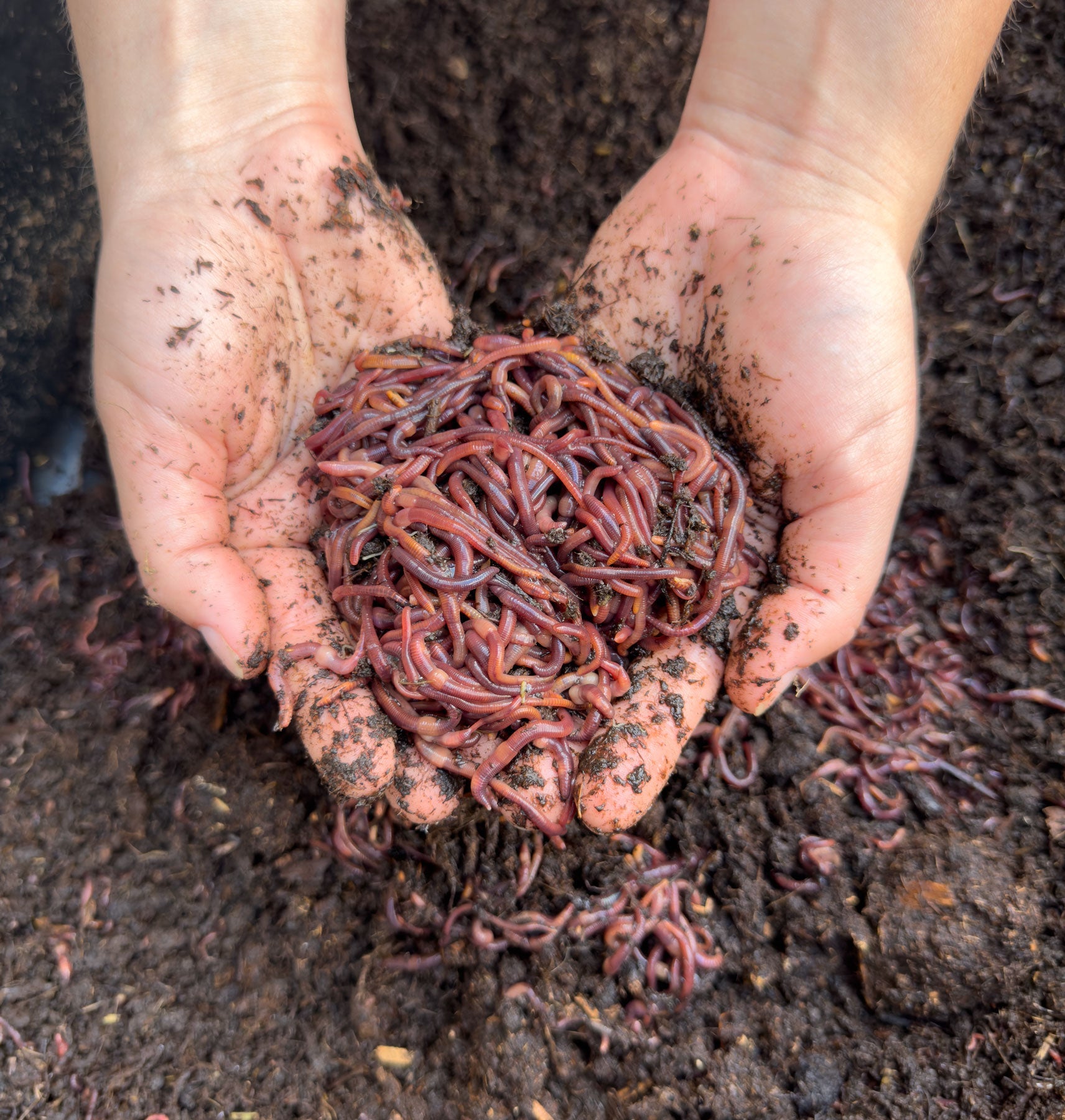The Secret to Lush Lawns Starts with Red Wiggler Express Grass Treatment
The Secret to Lush Lawns Starts with Red Wiggler Express Grass Treatment
Blog Article
How Red Wigglers Can Transform Your Composting Experience
The combination of red wigglers right into composting practices uses a transformative approach to waste administration and soil enrichment. These organisms not only accelerate the decomposition process yet additionally create nutrient-dense vermicompost that enhances dirt health and fertility. Their adaptability to different settings makes them an appropriate choice for both beginner and knowledgeable composters alike. Recognizing the particular requirements and advantages associated with preserving a growing worm populace is important for maximizing their possibility. What strategies can one employ to ensure a successful vermicomposting experience?
Benefits of Red Wigglers
Red wigglers, clinically called Eisenia fetida, are a cornerstone of effective composting systems because of their exceptional ability to decompose raw material efficiently. These worms master transforming kitchen scraps, yard waste, and other organic products right into nutrient-rich garden compost, typically referred to as worm spreadings. Lake Hickory Bait. This procedure not just lowers garbage dump waste however likewise adds to sustainable horticulture methods
One of the key advantages of red wigglers is their high reproduction price, allowing them to populate a composting atmosphere swiftly. This quick reproduction improves decay rates, resulting in faster compost production. Furthermore, red wigglers thrive in a diverse variety of conditions, making them adaptable to different composting configurations.

Setting Up Your Worm Bin
(Lake Rhodhiss Bait)To create an efficient worm container for composting, mindful attention should be offered to its design and setting. An optimal worm bin must be created of products that are sturdy yet enable necessary air flow, such as plastic or timber. The size of the container can differ, but a volume of approximately 1 square foot per extra pound of worms is an excellent beginning point.
Ensure that the bin has drain openings to stop water build-up, which can cause anaerobic problems damaging to the worms. Additionally, integrating ventilation holes will aid preserve correct moisture degrees and oxygen flow.
Following, it is crucial to supply bed linen for the worms, which can include shredded paper, cardboard, or coconut coir. This bedding not just provides an environment for the worms but additionally aids in dampness retention.
Setting the worm container in a location that maintains a temperature level range of 55-77 ° F(13-25 ° C) to optimize worm activity. Avoid positioning the container in straight sunshine or extreme temperatures. By adhering to these standards, you can develop a helpful setting for red wigglers, improving the efficiency of your composting procedure.
What to Feed Your Worms

(Red Wiggler Express)Red wigglers specifically take pleasure in soft, moist foods like watermelon rinds, cucumber peels, and banana peels. Nonetheless, it is vital to prevent feeding them citrus fruits, onions, and garlic, as these can be detrimental to their wellness. Additionally, cooked foods, dairy items, and meat needs to be strictly stayed clear of, as they can lead to smells and attract bugs.
To maintain optimum conditions, it's recommended to slice larger scraps right into smaller pieces, helping with quicker disintegration. Begin by presenting tiny quantities of food and keep track of the worms' consumption price; adjust accordingly to avoid overfeeding, which can produce an unhealthy atmosphere. Offering a consistent feeding routine will help maintain your worm population flourishing while enhancing the total effectiveness of your composting efforts. By understanding what to feed your worms, you lay the foundation for an effective and sustainable composting experience.
Keeping a Healthy Environment
Producing a prospering composting setting for red wigglers calls for focus to their environment, as it straight influences their health and performance. The optimal environment should maintain a balanced moisture degree, typically in between 60-70%. Excessive dampness can lead to anaerobic problems, while insufficient dampness may dehydrate the worms.

The bedding material in the compost should vary and shredded, incorporating products like cardboard, newspaper, and coconut coir. This not just provides a comfortable atmosphere yet also serves as a food resource. Lake Hickory Bait. Frequently looking for smells or indicators of pests can help identify prospective concerns before they rise
Last but not least, keeping a balanced pH level, preferably between 6 and 7, makes certain a conducive environment for red wigglers, promoting their capacity to process raw material efficiently. By dealing with these factors, you can create a sustainable and effective composting ecological community.
Harvesting and Utilizing Garden Compost
Harvesting garden compost from a worm container is a gratifying process that changes organic waste right into nutrient-rich product for yards and plants. This can be done making use of methods such as the "light" method, where worms are attracted to light and can be scooped away from the leading layers, or by relocating the compost to one side of the bin and including fresh bedding to the various other side, motivating the worms to move.
When the worms are removed, the remaining garden compost can be sifted to get rid of any larger fragments or undecomposed product. This abundant garden compost can be used directly published here to yard beds, combined into potting dirt, or made use of as a leading dressing for potted plants.
Verdict
Incorporating red wigglers into composting practices significantly improves the decomposition process and adds to the production of nutrient-rich vermicompost. Their versatility to numerous settings and high recreation prices make sure a lasting populace, which properly damages down raw material. The resulting worm spreadings enhance soil framework, fertility, and microbial task, eventually promoting healthier plant growth. For that reason, the integration of red wigglers into composting not only enhances waste monitoring yet also enriches garden ecological communities.
Report this page